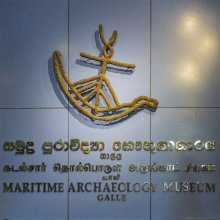Kankai, Kāṅkaī, Kamkai, Kāṅkai, Kāṇkai: 6 definitions
Introduction:
Kankai means something in the history of ancient India, Marathi, Jainism, Prakrit, biology, Tamil. If you want to know the exact meaning, history, etymology or English translation of this term then check out the descriptions on this page. Add your comment or reference to a book if you want to contribute to this summary article.
Images (photo gallery)
India history and geography
Source: academia.edu: Minor Chiefs and "Hero" in Ancient TamilakamKaṅkai (mahānadī-Gaṅga) is a name related to the historical geography and rulers of ancient Tamil Nadu, occuring in Sangam literature such as the Akanāṉūṟu and the Puṟanāṉūṟu.—Notes: celebrated in the Cilappatikāram, ‘Nīrpaṭaikkātai’ (Puṟam 161, Subrahmanian 1990: 191).
Source: Institut Français de Pondichéry: The Shaivite legends of KanchipuramKaṅkai (கங்கை) (in Tamil) refers to Gaṅgā in Sanskrit, and represents one of the proper nouns mentioned in the Kanchipuranam, which narrates the Shaivite Legends of Kanchipuram—an ancient and sacred district in Tamil Nadu (India). The Kanchipuranam (mentioning Kaṅkai) reminds us that Kanchipuram represents an important seat of Hinduism where Vaishnavism and Shaivism have co-existed since ancient times.

The history of India traces the identification of countries, villages, towns and other regions of India, as well as mythology, zoology, royal dynasties, rulers, tribes, local festivities and traditions and regional languages. Ancient India enjoyed religious freedom and encourages the path of Dharma, a concept common to Buddhism, Hinduism, and Jainism.
Biology (plants and animals)
Source: Google Books: CRC World Dictionary (Regional names)Kankai in India is the name of a plant defined with Elytraria nodosa in various botanical sources. This page contains potential references in Ayurveda, modern medicine, and other folk traditions or local practices It has the synonym Tubiflora acaulis Kuntze (among others).
Example references for further research on medicinal uses or toxicity (see latin names for full list):
· Enumeratio Plantarum (1804)
· Flora of West Tropical Africa (1931)
· Journal of the Washington Academy of Sciences (1938)
· Rep. Bot. Exch. Cl. Brit. Isles (1916)
· Supplementum Plantarum (1781)
· Flora BorealiAmericana (1803)
If you are looking for specific details regarding Kankai, for example diet and recipes, pregnancy safety, health benefits, extract dosage, side effects, chemical composition, have a look at these references.

This sections includes definitions from the five kingdoms of living things: Animals, Plants, Fungi, Protists and Monera. It will include both the official binomial nomenclature (scientific names usually in Latin) as well as regional spellings and variants.
Languages of India and abroad
Marathi-English dictionary
Source: DDSA: The Molesworth Marathi and English Dictionarykāṅkaī (कांकई).—f The name of a shell-fish and of its shell.
Marathi is an Indo-European language having over 70 million native speakers people in (predominantly) Maharashtra India. Marathi, like many other Indo-Aryan languages, evolved from early forms of Prakrit, which itself is a subset of Sanskrit, one of the most ancient languages of the world.
Prakrit-English dictionary
Source: DDSA: Paia-sadda-mahannavo; a comprehensive Prakrit Hindi dictionaryKaṃkai (कंकै) in the Prakrit language is related to the Sanskrit word: Kaṅkati.
Prakrit is an ancient language closely associated with both Pali and Sanskrit. Jain literature is often composed in this language or sub-dialects, such as the Agamas and their commentaries which are written in Ardhamagadhi and Maharashtri Prakrit. The earliest extant texts can be dated to as early as the 4th century BCE although core portions might be older.
Tamil dictionary
Source: DDSA: University of Madras: Tamil LexiconKaṅkai (கங்கை) noun < gaṅgā.
1. The river Ganges; ஒரு நதி. [oru nathi.] (நாலாயிர திவ்யப்பிரபந்தம் பெரிய.ாழ். [nalayira thivyappirapandam periyazh.] 4, 7, 1.)
2. River in general, the proper name of the Ganges becoming a common noun to denote any river; நதி. உவரிமிசைக் கங்கைகள் வந்தெய்தும் [nathi. uvarimisaig kangaigal vantheythum] (கந்தபு. தாரக. [kanthapu. tharaga.] 37).
3. Solder. See கங்கைக்குணன். [kangaikkunan.] (W.)
--- OR ---
Kāṅkai (காங்கை) noun probably from காய்கை. [kaykai.] [Telugu: kāka, K. kāṅke.] Heat, feverishness, pyrexia; வெப் பம். [vep pam.]
--- OR ---
Kāṇkai (காண்கை) noun < idem. Knowledge; அறிவு. பொய்யா . . . காண்கையர் [arivu. poyya . . . kankaiyar] (பத்துப்பாட்டு: முல்லைப்பாட்டு [pathuppattu: mullaippattu] 56).
Tamil is an ancient language of India from the Dravidian family spoken by roughly 250 million people mainly in southern India and Sri Lanka.
See also (Relevant definitions)
Starts with: Kankai-konta-colapuram, Kankai-kontacolan, Kankaikkunan, Kankaikulam, Kankaimaintan, Kankaimittan, Kankaiperron, Kankairo, Kankaituvi, Kankaiveniyan, Kankaiyal, Kankaiyamman, Kankaiyan.
Ends with: Akacakankai, Akankai, Akayakankai, Civakankai, Mavalikankai, Patalakankai, Pirkankai, Pittakkankai, Takshinakankai, Tekakankai.
Full-text (+48): Kankaiveniyan, Kankaituvi, Akayakankai, Takshinakankai, Cattanati, Tekakankai, Pittakkankai, Kankati, Piravetcanam, Salai-kangai, Kankaimaintan, Akacakankai, Kankaikkunan, Kankaiyamman, Patalakankai, Mukataricanam, Kangai, Mavalikankai, Veppukkoti, Vanati.
Relevant text
Search found 2 books and stories containing Kankai, Kāṅkaī, Kamkai, Kaṃkai, Kaṅkai, Kangai, Kāṅkai, Kāṇkai, Kaangai, Kaankai; (plurals include: Kankais, Kāṅkaīs, Kamkais, Kaṃkais, Kaṅkais, Kangais, Kāṅkais, Kāṇkais, Kaangais, Kaankais). You can also click to the full overview containing English textual excerpts. Below are direct links for the most relevant articles:
The Religion and Philosophy of Tevaram (Thevaram) (by M. A. Dorai Rangaswamy)
Chapter 2.2 - Gangadhara-murti (depiction of the descent of Ganga) < [Volume 2 - Nampi Arurar and Mythology]
Hindu Pluralism (by Elaine M. Fisher)
The sites of Multilingual Literary production in Nāyaka-period South India < [Chapter 4 - The Language Games of Śiva]
